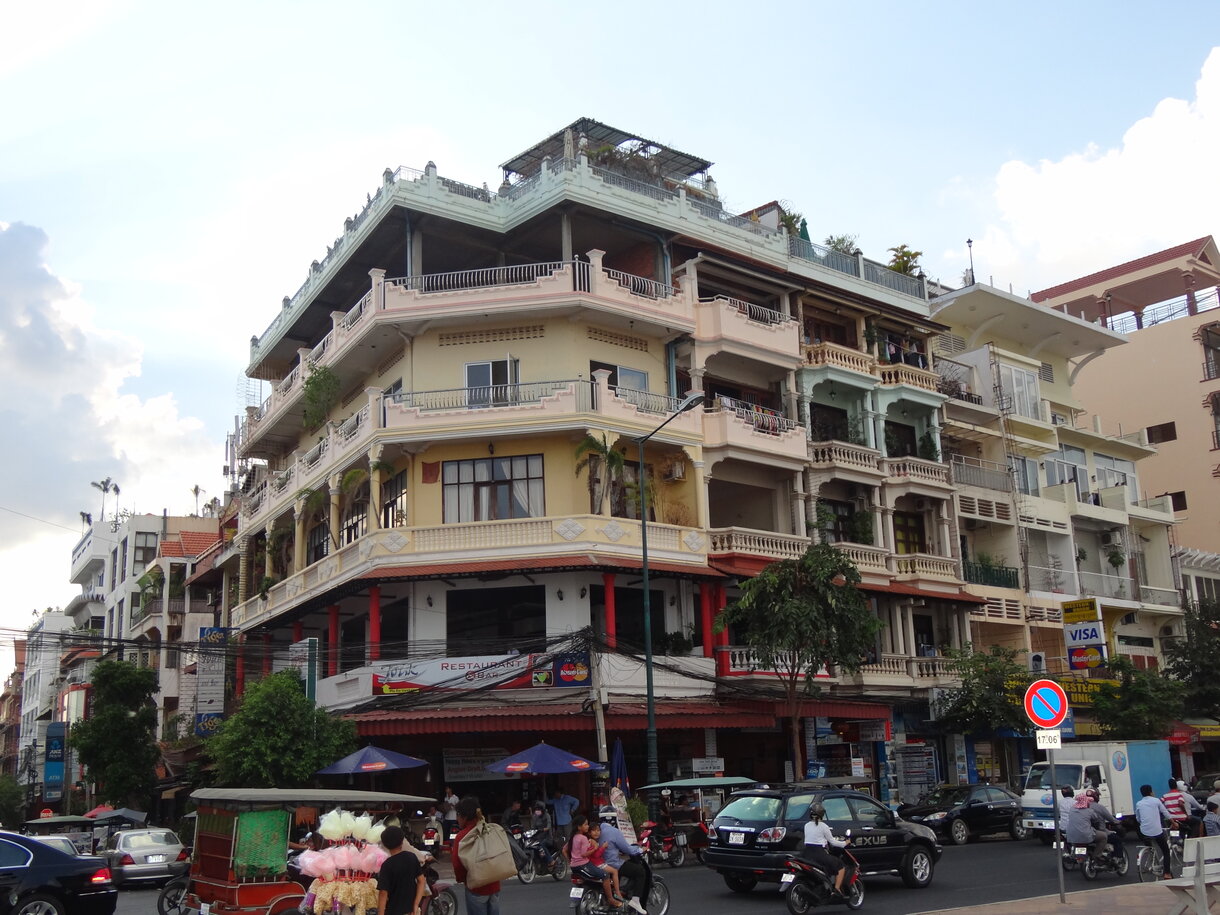Discover Phnom Penh – the vibrant capital of Cambodia, where colonial charm meets tragic history and dynamic development. A guide to the city’s museums, markets, and nightlife.
Phnom Penh, Cambodia, Cambodian capital, Southeast Asia travel, National Museum of Cambodia, Phnom Penh markets, colonial architecture, Cambodia tourism, Khmer history, Southeast Asia
Phnom Penh – City of Contrasts
A journey to Cambodia’s capital is a journey through contrasts. We pass villages where poverty is visible at every turn, only to arrive in modern Phnom Penh with luxury cars and colonial architecture. (Fun fact: The city’s name means “Hill of Lady Penh” and comes from a legend about a nun who found Buddha statues in the river).
Our first steps lead to the National Museum – a true treasury of Khmer culture. Good to know: The building in traditional Khmer style was designed in 1917 by French architect George Groslier. Here you’ll find the most valuable artifacts from Angkor, including the famous 6th-century statue of “Reclining Vishnu”.

The true soul of the city lies in its markets. Russian Market (Psar Toul Tom Poung) is a paradise for souvenir hunters, while Central Market (Psar Thmei) in its art deco building is where you can feel the local atmosphere. Tip: Try Cambodian street food here – especially fried spiders (a specialty from Skuon) or freshly squeezed tamarind juices.
Evenings in Phnom Penh aren’t particularly exciting, but along the Tonle Sap river you’ll find pleasant bars and restaurants. Historical fact: In the 1960s, the city was called “The Pearl of Asia” and rivaled Bangkok’s nightlife until the Khmer Rouge came to power in 1975.

Accommodation in Phnom Penh is incredibly cheap – you can find a good double room for just $10. Recommended areas: Riverside for those who want to be in the center of action, or BKK1 for a more peaceful atmosphere with cozy cafes. Dinner at a local eatery costs $2-5 – be sure to try the national dish amok (fish in coconut curry cream).
Additional noteworthy attractions:
- Royal Palace – residence of Cambodian monarchs since 1866
- Tuol Sleng (S-21) – moving museum of a former Khmer Rouge prison
- Wat Phnom – the historic hill where the city’s story began
- Sisowath Quay – perfect spot for an evening stroll

Leave a Reply